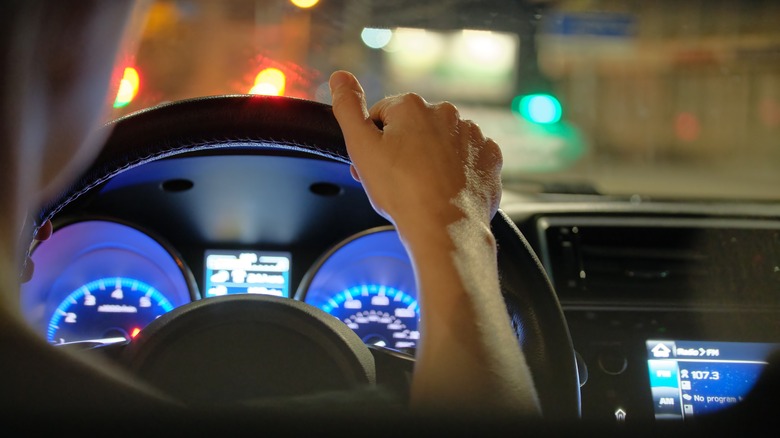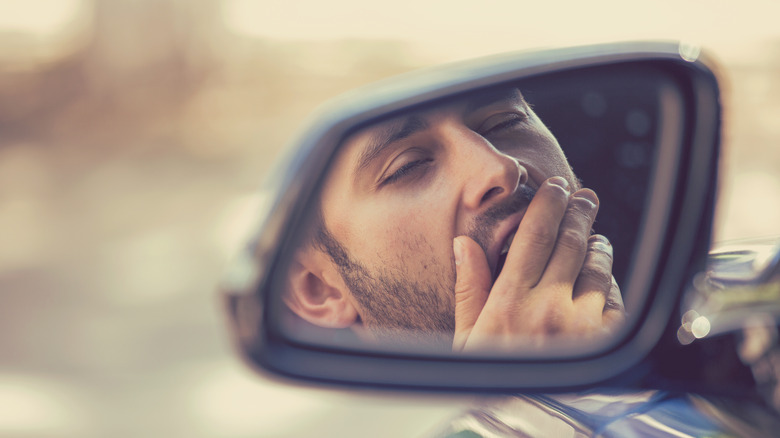When You Drive Before Bed, This Is What Happens
Whether it's a quick trip to the gas station or driving home from a late-night movie, getting behind the wheel of a car when you're sleepy can be dangerous. The Centers for Disease Control and Prevention, or CDC, reports drowsy driving as driving a motor vehicle while fatigued, and is a big problem in the United States. Out of nearly 147,100 people surveyed in 2009 to 2010, approximately one out of 25 people reported falling asleep while driving in the past 30 days.
Why a person falls asleep behind the wheel varies person-to-person. Sleep disorders, alcohol, medications, lack of sleep, and the time of day can all cause drowsiness, according to the Sleep Foundation. Add driving into the mix and it's a recipe for a potentially deadly outcome. Most drowsy driving vehicle accidents occur during the hours of midnight to 6 a.m. or in the mid-afternoon.
Because drowsy driving accidents occur while most people are sleeping, this puts certain people at risk when they get behind the wheel. The University of California, Los Angeles reports business travelers, shift workers, sleep-deprived drivers, people with undiagnosed sleep disorders, and young men, due to their risk-taking behavior, are all at higher risk of driving drowsy. People who snore are at higher risk of dozing off while operating a vehicle as well (via CDC).
Symptoms of drowsy driving
Driving while drowsy is a dangerous situation as your body isn't operating as it would on a full night's rest. For example, being drowsy can make a driver less attentive and can slow a driver's reaction time, two things that are desperately needed by people behind the wheel (via CDC). Drowsy driving can also affect a motorist's ability to make driving decisions.
The American Academy of Sleep Medicine says drowsy driving is "a serious public health concern," but can be prevented by knowing the symptoms of drowsy driving. Nodding off, having trouble keeping your head up, missing turns, drifting out of your lane, hitting a rumble strip, and following too closely to cars are all warning signs of drowsy driving.
If you want to avoid drowsy driving, there are some tips you can follow, although some may involve a lifestyle change, depending on the person. The National Highway Traffic Safety Administration (NHTSA) recommends prioritizing adequate sleep, avoiding alcohol before operating a vehicle, and being aware of any medications you're taking. Some medications have drowsiness as a side effect. For a short-term solution, pull over for a 20-minute nap in a safe place to wake you up enough to get to your next destination safely.


